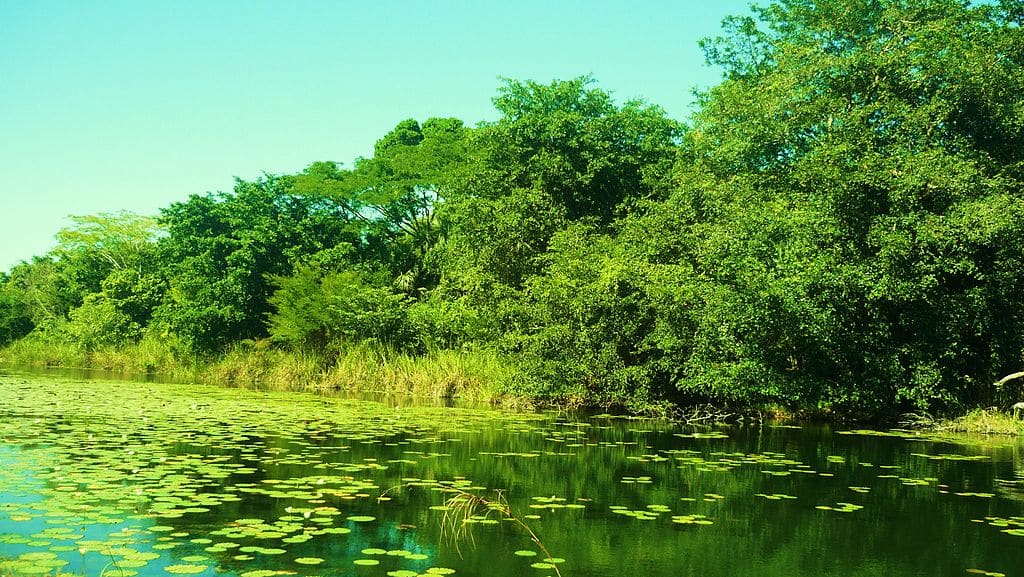Los Petenes in Campeche

Los Petenes in Campeche is located in a narrow and long coastal strip. It includes land and marine portions. It is one of the largest mangrove areas in the Gulf of Mexico. It also has an enormous diversity of flora and fauna, and is home to 473 plant species, 22 of which are endemic.
The Reserve is a vast area of well-preserved wetlands, a nesting and reproduction area for species such as the pink flamingo and hawksbill turtle. As well as a resting area for various migratory birds.
Los Petenes in Campeche: what to expect
The Petenes are islets with medium-sized jungle vegetation that develop among the mangrove swamps. Within the reserve is the Petrified Forest that is composed of dry trees with whimsical shapes that result in a mysterious landscape of strange natural beauty. In the northern part of the reserve there is an important archeological zone, Isla de Jaina. However, you can only visit it with a permit from the National Institute of Archeology and History.
Of course, this area offers various activities such as boat and kayak rides, fishing and camping.
What animals to see
Here you can meet the rare needle duck and the jabiru stork. As well as crowned owls, mallard ducks, tyrant eaglets and Yucatecan parrots. Pink flamingos are here as usual, and loggerhead, white and hawksbill turtles come to the coasts.
The different natural scenarios and the biodiversity are present in both terrestrial and aquatic environments. This means that Los Petenes has significant potential for developing a sustainable tourism and recreation program. In its marine zone, you can practice sport fishing in season, and kayaking in the southern end. There are also visits and tours to the 5 haciendas. They are Tankuché, San Nicolás, Santa Cruz, Chunkanán and San Antonio Sodzil. Other attractions are the gastronomy, especially the cochinita pibil. Try it at Hecelchakán, the traditional bakery in Pomuch, and the jipi handicrafts in Calkiní.
Los Petenes in Campeche: What to do
The protected natural area offers a variety of recreational activities such as boat or kayak rides and camping. There is also environmental education, sport fishing, visits and tours to former Haciendas (Sodzil, Chunkanan, Santa Cruz and Tankuche), and craft tours (jipi palm, chelen, henequen and “cow’s tongue”, a type of plant.
In the northern coastal part of the reserve is the island of Jaina, which can be visited with permission from the National Institute of Archaeology and History (Instituto Nacional de Arqueología e Historia).
How to get there
There are two ways to get to Los Petenes Biosphere Reserve:
Road to Jaina Island, take the Campeche-Merida highway and enter the town of Pomuch, (just at the central park, turn left towards the community of Sodzil), continue until you reach a dirt road of 26 kilometers towards the coast.
On the way to the coast of Tenabo, take the Campeche-Merida highway and enter the town of Tenabo (from the main park two blocks west, then turn left), take the dirt road for 36 kilometers to the coast of Tenabo.
